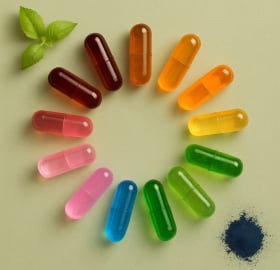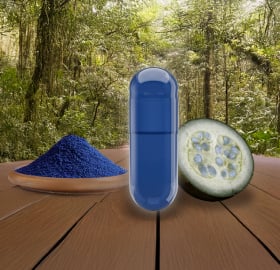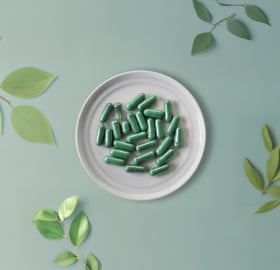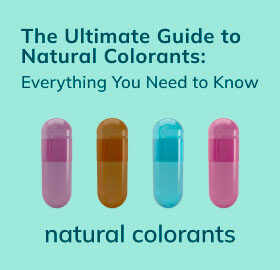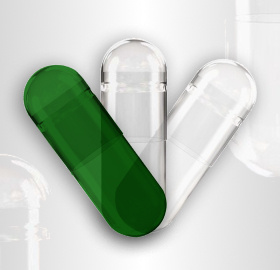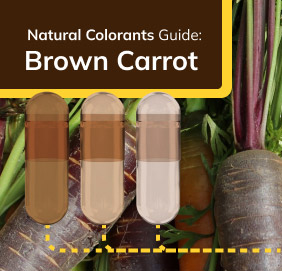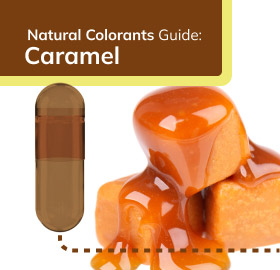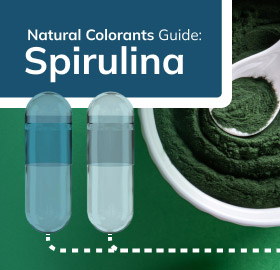When it comes to nutritional supplements, consumers are increasingly demanding 'clean labels' and the most 'natural' products possible. That's why K-CAPS® vegetarian empty capsules with natural colorants were developed—to meet these exacting standards. When your customers are scrutinizing every detail, even the capsules holding your product need to be as natural as what's inside
All K-CAPS® empty capsules share some important characteristics
The good news? K-CAPS® natural color capsules offer the same high-quality and dissolution properties as those made with synthetic colorants—they’re just a more natural choice.
Whether you opt for natural or synthetic colorants, all K-CAPS® empty capsules are:
- Made from HPMC, a plant-derived material
- Vegetarian and Vegan, registered with the Vegan Society
- Kosher and Halal certified
- Non-GMO
- Free from preservatives, allergens, and starches"
What are the sources of the colorants used to make these natural color capsules?
In line with its name, natural colorants are sourced from nature. Here’s what you should know about the natural origins of the colorants CapsCanada uses in its naturally colored capsules.
Annatto
Bixa Orellana
Annatto natural colorant is an aqueous alkali that is extracted from the spiney seed pods of the annatto bush. The solution is pH adjusted by the addition of potassium hydroxide and then spray dried using dried glucose syrup and maltodextrin as carriers.
In the European Union, annatto natural colorant is also referred to as norbixin.
Learn more
Brown Carrot
Caucus carota L. and Daucus carota ssp. Sativus var. atrorubens
Brown carrot natural colorant is not made from brown carrots. Instead, it is made from purple carrots and black carrots. To control the pH, citric acid is added at the time of harvest. It is then concentrated and dried without the use of any carriers.
Discover more
Caramel
Caramel natural colorant is a liquid that is obtained by the controlled heat treatment of plant-based glucose in the presence of ammonium sulfite.
Purple Sweet Potato
Dioscorea alata
Purple sweet potato natural colorant is made from purple sweet potatoes. To control the pH, citric acid is added at the time of harvest. This natural colorant is then concentrated and dried without the use of any carriers.
Red Radish
Raphanus sativus
Red radish natural colorant is produced from red radishes. To control the pH, citric acid is added at the time of harvest. This natural colorant is then concentrated and dried without the use of any carriers; the end result is non-hygroscopic and readily soluble.
Safflower
Carthamus tinctorius
Safflower natural colorant is a concentrated aqueous extract made from the flower of the safflower plant.
Spirulina
Arthosphira Platensis
Spirulina natural colorant is extracted from Arthrospira platensis, which is an edible blue-green algae. The colorant is obtained via water extraction and then spray dried to form a powder.
Annatto + Spirulina
Bixa Orellana + Arthosphira Platensis
By combining the properties and benefits of Bixa Orellana (annatto) and Arthosphira Platensis (spirulina) together, they achieve a green color that is perfect for supplements and vitamins.
Vegetable Carbon
Vegetable carbon natural colorant is produced by the carbonization of vegetable material such as wood, cellulose residues and peat, as well as coconut and other shells. The activated carbon produced is then milled by a roller mill. The resulting highly-activated powdered carbon is treated by a cyclone. The fine fraction from the cyclone is then purified via a hydrochloric acid washing, neutralized and then dried.
The natural colorant produced using this method is traditionally known as “vegetable black.” To create a colorant with higher coloring power, the fine fraction is subjected to further cyclone treatment or extra milling, followed by acid washing, neutralizing and drying.

Conclusion
K-CAPS® offers a natural, high-quality solution for your supplement needs, with capsules that are not only effective but also align with clean label demands—naturally sourced, plant-based, and free from unwanted additives.



-2.png?width=751&name=750x300%20(1)-2.png)



